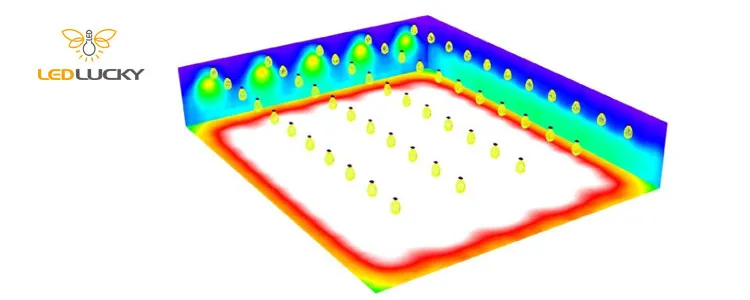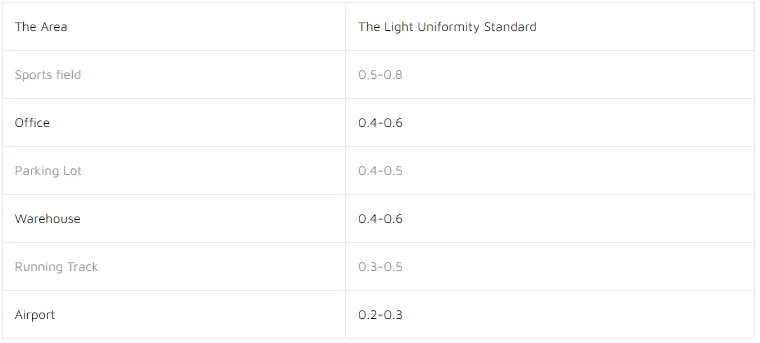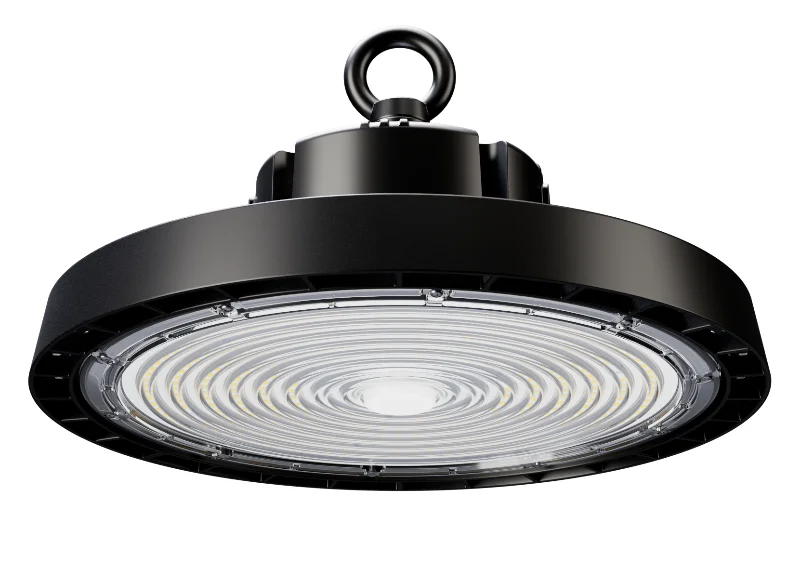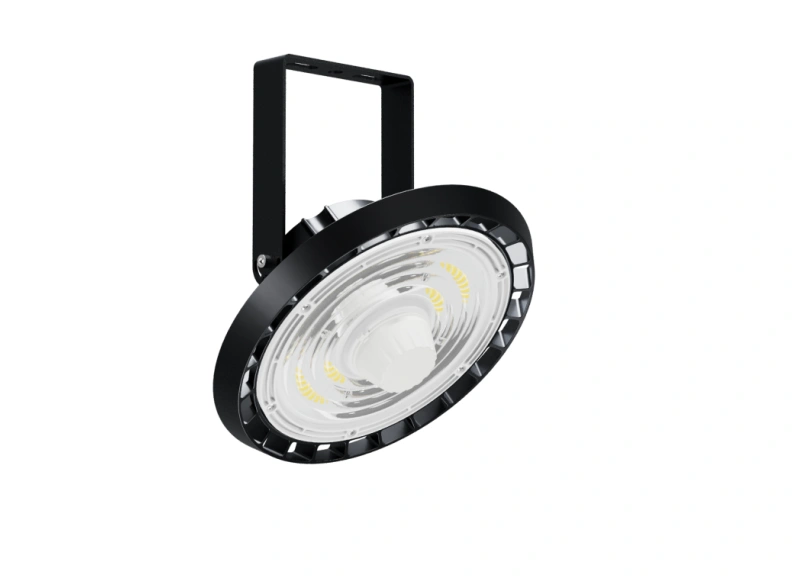How to Calculate Lighting Uniformity?

Table of Contents
Lighting is required wherever we go, especially indoors and during the night. To ensure proper lighting in a space, uniformity is vital. It helps improve user perception and allows one to clearly see the entire premises. Without uniform lighting, people would easily fall or accidents would occur. It is due to this reason that the government has made it mandatory for companies to provide adequate light uniformity at the workspace. However, light uniformity is required everywhere such as at the football court, gym, stadium, parking lot, and so on. If you want to learn more about light uniformity, you have come to the right place. This guide shares all the information that you could possibly need. So, what are you waiting for? Let’s start the guide.
1. What Is Light Uniformity?
In the simplest of words, light uniformity refers to the uniformity of lighting in an environment. It is vital to maintain the uniformity of light in order to make sure that everything is perfectly visible in the room. When referring to light uniformity of an area, the task area in which the objects and immediate surroundings are considered. The importance of maintaining an ample amount of brightness cannot be stressed enough. However, it is common for people to omit the calculation and measurement of light uniformity in a space. When the light uniformity is very low for indoor or outdoor lighting, it would lead to athletes, workers, or citizens feeling uncomfortable as their vision would be affected.
1.1 Light Uniformity Definition
- The definition of light uniformity clearly states that the illumination of an area as produced by the lighting. The ration of minimal illumination is usually mentioned when talking about light uniformity. There is a need for a sufficient amount of uniformity in lighting across the task area regardless of whether direct or indirect lighting is used.
1.2 Light Uniformity Factor
- The light uniformity factor refers to the light’s intensity in a given area. According to EN 12464-1, office lighting should be a minimum of 500 lux on an average for smooth reading, typing, writing, and data processing. The factor applies regardless of the condition or size of the structure in question. Our perception of the world around us is affected by lighting. Hence, lighting uniformity is crucial for navigation, and more. If there are breaks caused by lighting drops, it would hinder us from fully perceiving the space. The type of illumination impacts the uniformity as well as its position. Most focus-intensive tasks require a uniformity index of around 0.6, whereas, technical drawing and other demanding tasks require a ratio of at least 0.7.

2. How to Calculate Light Uniformity?
To ensure that proper light uniformity is provided, it is important to calculate light uniformity in a space. To help you calculate the light uniformity, the following will prove useful.
2.1 Light Uniformity Measurement
The lux meter is commonly used for measuring the brightness lux level. Then, we will get the figure required for the area. You might be wondering what you should do with the uniformity data. Now, it is unlikely that you will be able to measure the parameter using a single device since lighting uniformity refers to the ratio between the average and minimum lux or maximum and minimum lux. If you do not know what lux is, it is the unit of illumination which indicates the exact brightness that reaches on the ground.
2.2 Light Uniformity Formula
To measure light uniformity, the following formula comes in handy.
U1 = E (minimum) / E (average)
U2 = E (minimum) / E (maximum)
U stands for uniformity and E stands for illumination respectively.
E (average, maintained) = [(lumens per lamp) x (lamps per luminaire) x (number of luminaires) x CU x LLF] / [work plane area]
Light Loss Factor (LLF) – LLF is a multiplier used to simulate a reduction in lighting system effectiveness due to factors such as dirt accumulation (Luminaire Dirt Depreciation, Room Surface Dirt Depreciation), depreciation of lamp output over time (Lamp Lumen Depreciation), ballast performance (Ballast Factor), and others. These factors are multiplied together to achieve the total Light Loss Factor.
Coefficient of Utilization – The CU describes the fraction of lamp lumens that reach the work plane directly from the luminaire and via interreflections. It takes into account ‘room efficiency’, luminaire efficiency, and luminaire photometry. This value is valid for empty rooms exhibiting perfectly diffuse reflectance.
Calculate the average illuminance from the above formula, and measure the minimum illuminance with Illuminometer, then you can get the lighting uniformity.
From the above formula, it should be clear that light uniformity is basically the ratio of the illumination or lux level. This uniformity ratio is extremely useful as it allows you to determine how the lights evenly distribute light onto the ground. If the difference between average and minimum lux is not high, the ratio would be high. It indicates better light uniformity.
According to the national codes of practice, the minimum illumination needs to correspond with the recommended illumination levels. The general lighting scheme sets the uniformity levels at 0.6 and 0.8 as set by UK CIBSE and German DIN guidelines.
If you’re unsure of the lighting uniformity you need, click to get advice.
3. Light Uniformity Standard
There are different light uniformity standards that need to be followed depending on the nature of the environment. For instance, if we take a football field, the following standard must be followed. Please refer to Football Field Lighting Design.

You must have noticed by checking the above that the lighting uniformity standard increases as the competition level of the field increases. On the other hand, if the field is designed for recreational and training purposes, the illumination and uniformity requirement would be less. The lighting requirement tends to be rigorous in the case of televised and national matches.
Industrial and Commercial Lighting Uniformity Requirement

There is no harm in increasing high uniformity lighting as it helps improve the vision of road users and workers at night. However, the more complex the lighting system is the higher the cost of illumination. Thus, you need to bear the cost if you want to increase uniform illumination. The best way to beat costs is by getting LED lights from LEDLUCKY.
4. Conclusion
Once you have gone over this post, you will know everything about light uniformity. Although it is crucial to achieve high uniformity at the task area, research reveals that too much of uniformity reduces alertness in people and makes them get exhausted more easily. This is why there is a need to create some contrasts on the walls. Make sure to purchase LED lights from LEDLUCKY as the company provides the best lights.
See the LED Stadium Light
Thanks for reading. We also provide other LED lights as while. Click the below link to view if you are interested.






